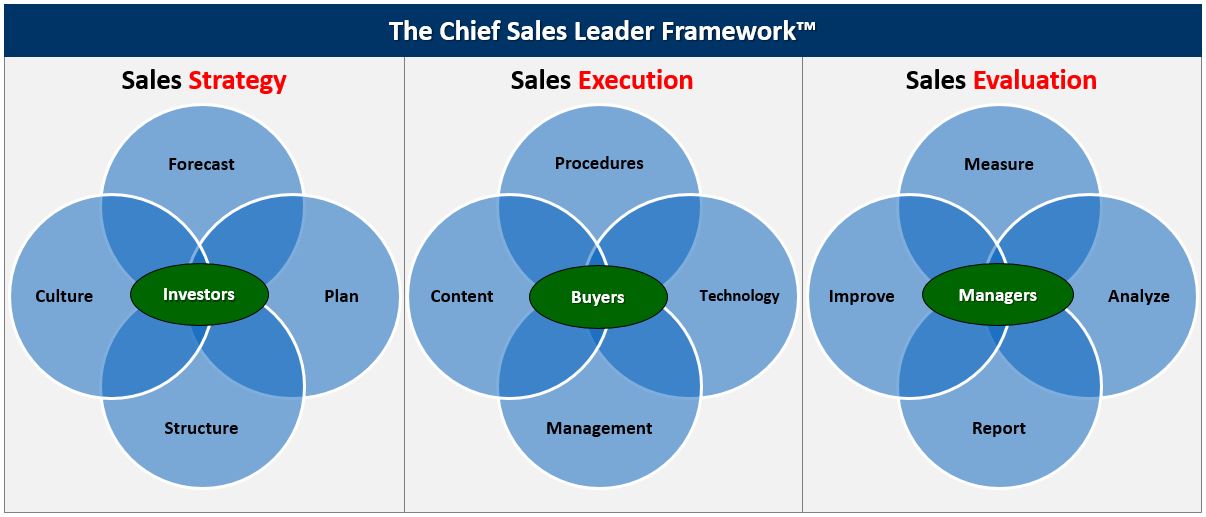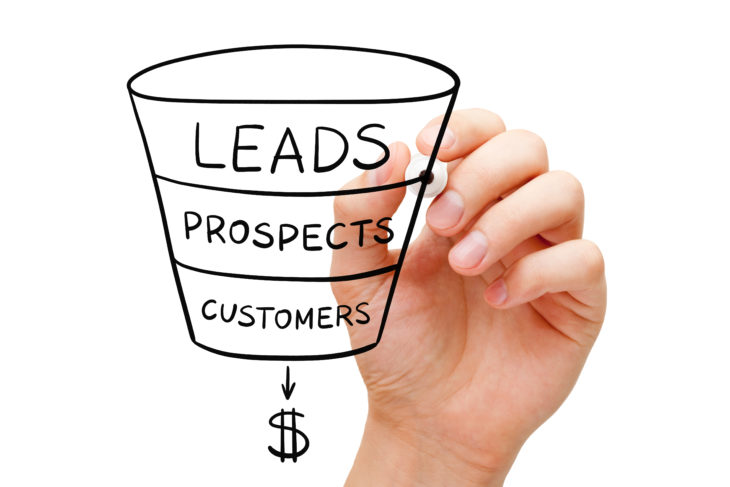Start-up Sales Approach
Enable your sales team and managers to execute with precision – – effectively, efficiently & predictably

Causes of Start-up Sales Failure
#1 Entrepreneurs Lack Sales Experience in lead generation, appointment setting, buyer qualification and needs investigation, pricing, and asking for the sale
#2 Product or Service is not viewed as a “must-have” and/or does not meet buyer minimum viable expectations
#3 Sales Lead Is Distracted by building the product or services, meetings with investors, or other challenges
#4 Time Pressure to generate immediate revenue results to cover start-up costs distracts or scares off buyers
#5 Selling To The Future rather than selling buyers on what the product/service is today
We Use The Chief Sales Leader Framework™
To generate sales and lay the foundation for the three (3) strategic and twelve (12) operating sales processes that are required for a sales team to execute with precision – – effectively, efficiently, and predictably

Steps For Creating Your Start-up Sales Approach
Start-up Sales Approach
Step 1 – Understand The Buyer Decision Process
- What answers do buyers need in order to make a purchase?
- What questions do buyers not know to ask about your offering?
- What is the right sequence of questions and answers to engage?
- What are you asking them to start and stop doing?
- What are the ten reasons why they will so “no” to purchase?


Step 2 – Craft Value Prop & Sales Call Guide
- Open the sales conversation
- Investigate buyer needs and qualify them
- Demonstration your solution
- Present pricing options
- Negotiate and close the deal
- Handle objections at any point during the conversation
Step 3 – Schedule Sales Appointments
- Define target industries, companies and buy points
- Find contact information i.e. email and phone
- Craft message to get buyers to say “yes” to an
appointment - Request appointments via email and phone
- Deploy marketing automation to sustain contact
- Track appointment setting results i.e. email and phone


Step 4 – Conduct Sales Conversations With Buyers
- Inside sales call using online screen sharing
- Field sales calls
- Online chat sales call via your website
- Joint sales call with channel partners
- Global or national account sales calls
Step 5 – Track Your Sales Pipeline & Opportunities
- Contact history notes
- Source – – where did you meet the contact?
- Milestone and status
- Sales opportunities and probability of closing the sale

Step 6 – Build-out Sales Process Infrastructure For Growth
Part 1 – Sales Strategy
- Sales forecasting for revenue, sales pipeline activities, sales productivity, staffing requirements and selling expenses
- Sales and market planning by industry, geography, buy-point, product, and service, buy point, etc.
- Sales organization design to get the right salespeople to the right place at the right time
- Sales culture to ensure that sales call execution is being reinforced
Part 2 – Sales Execution
- Sales procedures for lead generation, appointment setting, new customer acquisition, customer onboarding, customer service, account management renewals, cross-selling, and win-backs
- Sales technology including CRM, marketing automation, customer service, phone, auto-dialer, sales library, productivity, project management, territory mapping and routing, and human resources
- Sales content for awareness building, purchase evaluation, company information, product and service information, pricing and proposals, promotional materials, contacts and customer service help desk
- Sales people for hiring, onboarding, coaching, compensating, rewarding, evaluating, training, developing future sales leaders, and succession planning
Part 3 – Sales Evaluation
- Sales measurement for tracking sales activities, sales opportunities, and contact history
- Sales analysis for internal activities, results, and trends; as well as external events and trends
- Sales reporting for industries, buyer companies, sales activities, revenue, sales regions, and salespeople
- Sales process improvement for gap analysis, problem identification and prioritization, improvement planning, and improvement reporting
